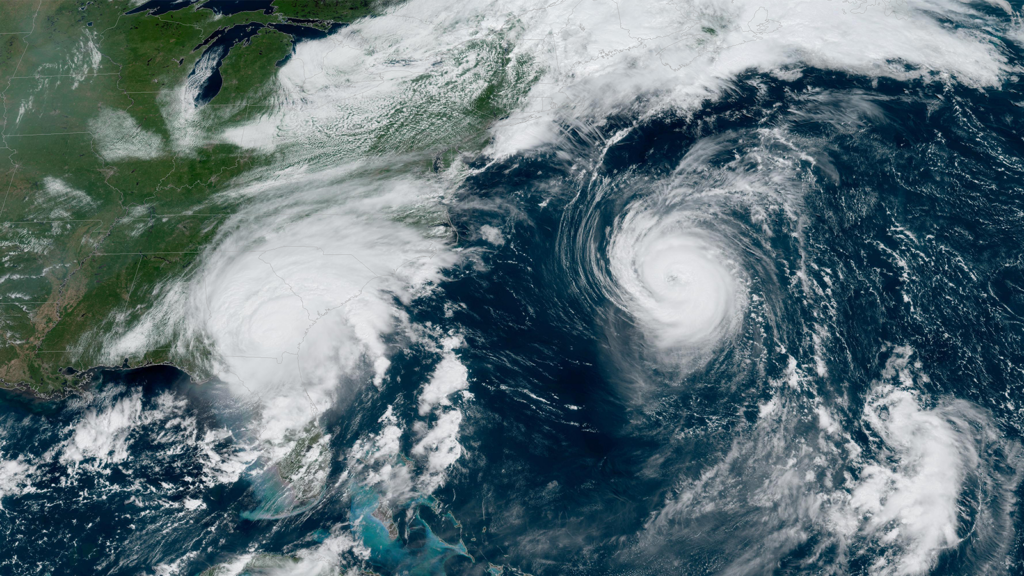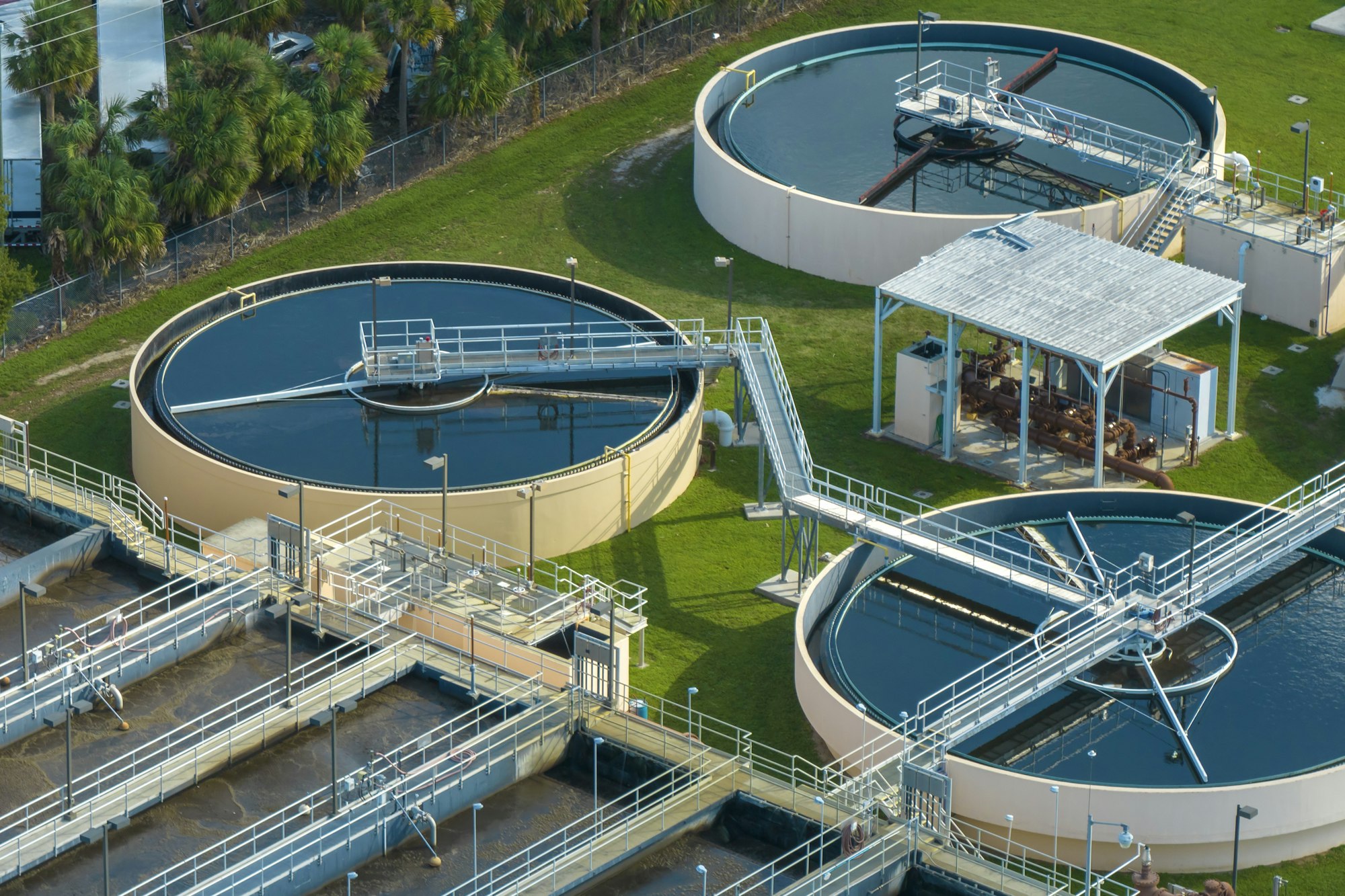Wastewater Visibility News
Hurricane Grit and Debris Accumulation in Wastewater Treatment Plants
Understanding and responding to the challenges of hurricane grit and debris accumulation after the storm has passed.
Hurricanes and storms, including the recent Hurricane Idalia that made landfall on August 30, 2023, are forces of nature that leave a trail of destruction in their wake. In addition to the visible damage they cause, these weather events can wreak havoc on essential infrastructure systems, including wastewater treatment plants.
One of the lesser-known challenges that wastewater treatment plants face post-hurricane is the accumulation of grit and debris, which can have a significant negative impact on the wastewater treatment process.
Hurricane grit and debris accumulation occurs in wastewater treatment plants after storms. The cutting-edge technology of SediVision provides wastewater managers with the information they need to know how much and where debris is located in tanks and accurately access tank cleaning and maintenance needs.
The Impact of Hurricanes on Wastewater Treatment Plants
By treating and purifying wastewater before it is released back into natural water bodies, wastewater treatment plants play a vital role in maintaining public health and environmental quality. However, when hurricanes and storms strike, the normal operations of these facilities are disrupted in several ways.
- Inflow and Infiltration: Heavy rainfall and flooding associated with hurricanes can significantly increase the volume of water entering the sewer system. This phenomenon, known as inflow and infiltration, can overwhelm treatment plants, leading to system backups and potentially discharging untreated or partially treated wastewater into the environment.
- Power Outages: Hurricanes often knock out power lines and substation transformers, leaving treatment plants without electricity. Without power, these plants cannot operate effectively, causing delays in the treatment process and affecting the quality of effluent.
- Physical Damage: Strong winds, flying debris, and flooding can damage critical infrastructure components of wastewater treatment plants, including pumps, pipes, and tanks. This physical damage can disrupt the normal flow of wastewater and create conditions conducive to grit and debris accumulation.
The Hurricane Grit and Debris Accumulation Challenge
One of the less obvious consequences of hurricanes and storms is the accumulation of grit and debris in wastewater treatment plants. Grit refers to small, solid particles such as sand, silt, and gravel, while debris can include leaves, branches, and other organic matter. These materials can find their way into treatment plant systems through inflow and infiltration or due to physical damage to infrastructure, including minor cracks and misaligned joints. These damaged pipes may not be evident during normal weather conditions without proper inspections.
Negative Impacts of Hurricane Grit and Debris Accumulation:
The accumulation of grit and debris can have several detrimental effects on wastewater treatment plants.
- Clogging and Damage: Grit and debris can clog pumps, pipes, and other equipment, reducing their efficiency and potentially causing damage, which can lead to costly repairs and downtime.
- Reduced Treatment Efficiency: Grit and debris can interfere with the treatment process itself, making it less effective at removing pollutants and pathogens from wastewater. This reduced efficiency can result in inadequately treated water being discharged into the environment.
- Increased Operating Costs: Grit and debris can drive up operational costs for treatment plants through higher energy demands and significant wear and tear on pumps downstream, diverting resources from other essential tasks.
SediVision, a Solution for Assessing Grit and Debris Accumulation
In the face of these challenges, technology offers a solution: SediVision.
SediVision is an advanced system that uses acoustic technology combined with Geographic Information System (GIS) data to quantify and map the accumulation of grit and debris in wastewater treatment tanks. Here’s how it works.
- Scanning: SediVision deploys equipment with sensors to scan wastewater biologic nutrient removal BNR tanks and large-diameter pipes.
- Data Analysis: The SediVision team then processes the collected data to create detailed maps and quantify grit and debris levels in the tanks and pipes.
- Decision-making: Operators can assess the data on grit and debris accumulation, allowing them to make informed decisions about when and where to clean and maintain their tanks.
Benefits of SediVision
- Efficient Resource Allocation: SediVision helps treatment plants allocate their resources more efficiently by identifying which tanks require immediate cleaning and maintenance, reducing unnecessary costs and work.
- Preventative Maintenance: By providing real-time data, SediVision enables treatment plants to implement preventative maintenance strategies, reducing the risk of equipment damage and operational disruptions.
- Environmental Protection: Cleaner treatment processes result in higher-quality effluent, reducing the environmental impact and ensuring compliance with regulatory standards.
Conclusion

Hurricanes and storms pose significant challenges to wastewater treatment plants, including the often-overlooked issue of grit and debris accumulation. Post-hurricane grit and debris accumulation can negatively impact treatment processes, increase maintenance costs, and harm the environment.
SediVision emerges as an efficient and reliable solution that empowers treatment plant operators to assess grit and debris accumulation more effectively, ultimately helping their facilities recover faster and maintain their critical role in safeguarding public health and the environment. In a world increasingly vulnerable to extreme weather events, technologies such as SediVision offer hope for more resilient and efficient wastewater treatment systems.
Learn More, Read: What Is Your Wastewater Tank Capacity? and Case Study at a Southwest Florida Wastewater Treatment Plant

Author Notes
Megan Ross, PE, ENV SP, Vice President, SediVision, LLC
More Recent Posts

105.668 Gallons of Wastewater to be Reused Daily in the Manufacture of Semiconductors

First-Ever National Drinking Water Standard to Protect 100M People from PFAS Pollution

Are Your Wastewater Tanks Consuming Excess Energy Due to Sand and Grit? Emerging Technology Can Help You Find Out

Happy Easter
Subscribe
Get news delivered straight to your inbox the day it gets published."*" indicates required fields
